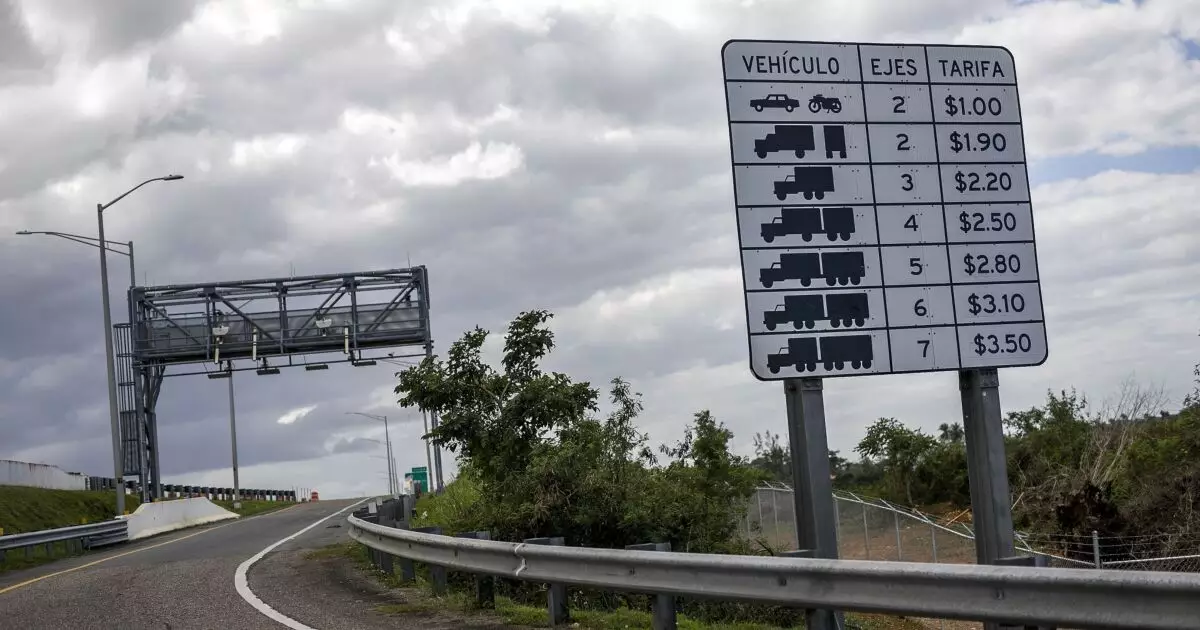As Puerto Rico continues to navigate its complicated financial landscape post-bankruptcy, the role of public-private partnerships (P3) has become increasingly significant. A pivotal development in this effort is the recent initiative to sell $286.2 million in senior revenue bonds by the Wisconsin-based Public Finance Authority, representing Puerto Rico Tollroads, LLC. This venture is not just an economic maneuver; it is a strategic step aimed at reinvigorating the territory’s beleaguered infrastructure system. The involvement of Barclays as the underwriter highlights the financial industry‘s recognition of Puerto Rico’s potential for recovery.
In December, Puerto Rico Tollroads, LLC, an affiliate of Abertis Infraestructuras S.A., entered into a lease agreement for four key highways from the Puerto Rico Highways and Transportation Authority. The concessionaire made a significant upfront payment of $2.85 billion, which was instrumental in settling $1.24 billion of toll revenue bonds associated with Puerto Rico’s bankruptcy plan. This transaction is indicative of a broader trend wherein P3 structures are leveraged to facilitate the financing of infrastructure projects. Notably, it represents a move to employ a financing model traditionally popular in U.S. transportation projects, where private activity bonds are allocated through the Department of Transportation and conveyed by a conduit.
Fitch Ratings’ designation of these bonds as BBB with a stable outlook underscores their critical role in the long-term financial strategy for Puerto Rico. The bonds are likely to generate much-needed resources for infrastructure improvement, as they are specifically tied to the four highways—Puerto Rico-52/PR-18, PR-66, PR-53, and PR-20—that form vital transportation arteries. Previous toll revenue bonds backed by the Puerto Rico Highways and Transportation Authority infrastructure serve as a reminder of the region’s financial intricacies and dependencies. The history of these tolls reflects broader economic challenges, underscoring the importance of ensuring the success of these current financing endeavors.
Despite the optimistic outlook outlined by Fitch, challenges remain. The convolution of future financial restructuring or re-gearing poses risks that could threaten the delicate balance achieved through these bonds. The term ‘re-gearing’ refers to increasing leverage, which could jeopardize the financial stability that the project seeks to establish. Additionally, there exists a concentrated bullet maturity of a $1.43 billion senior secured term loan, with a maturity date in 2028. This concentrated liability could present refinancing difficulties, thereby limiting the rating of the bonds and casting a shadow over future fiscal projections.
The establishment of the federal Oversight Board, as stipulated by the Puerto Rico Oversight, Management, and Economic Stability Act (PROMESA), has introduced a layer of governance that aims to bring more accountability to public finances in Puerto Rico. This oversight not only offers a framework for managing existing debt but also creates an environment conducive to attracting private investment. The government’s endorsement of Public Finance Authority as the issuing body for these bonds exemplifies a collaborative approach between public entities and private enterprises. This dynamic is essential for ensuring that the infrastructure of Puerto Rico can keep pace with the demands of its population.
It remains to be seen how effectively Puerto Rico Tollroads, LLC will implement capital improvements using bond proceeds, but there is reason for cautious optimism. The commitment to ensure necessary enhancements to the four highways suggests a proactive stance towards revitalizing public infrastructure. This effort reflects not only economic necessity but also a broader vision of reconnecting communities and stimulating local economies amid the aftershocks of bankruptcy. It positions Puerto Rico not just as a cautionary tale of failure but as a case study of resilience and innovative recovery strategies.
The intersection of public-private partnerships and municipal finance represents a beacon of hope for Puerto Rico’s infrastructural recovery, with the potential to foster growth and stability in a region that has faced significant challenges. The success of this initiative could provide a template for other jurisdictions grappling with similar financial and infrastructural adversities.

